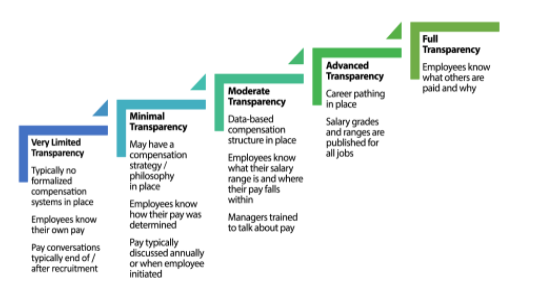Pandemics, Pay Transparency and Parents

The pandemic years have certainly provided variety. Australian HR and recruitment leaders have watched the ‘series’ unfold with angst, including a flailing economy, skyrocketing unemployment, working remotely, recovering markets, and booming labour. It’s been a bumpy road.
Recently, top leaders from a diverse collection of industries virtually met to discuss the challenges they face and how they will surmount the ever-changing, hyper-connected global employment landscape. Thought leaders across tech, finance, e-commerce, recruitment and aviation industries analysed trends and discussed employee experience, culture and acquisition. Overall, the economic future looks positive, and many businesses have flourished with impressive growth phases.
The unprecedented circumstances have led to a new future of unchartered waters with exciting emerging industries and teams working remotely. With the advent of new technologies, businesses can reset and reformat their operational priorities. The pandemic learning curve has been vast, but through virtual collaboration, hiring and onboarding have become commonplace with international recruitment offices.
The pandemic has unfortunately set back any significant progress made in pay parity over the last decade. Employers have to introduce pay transparency to narrow the pay gap disparity. You might remember in the early 2000s a social experiment with two capuchin monkeys who were paid with pieces of cucumber for completing a task. After establishing a pattern, the researcher started paying one of the monkey’s with grapes instead. Both monkeys were very aware that the grapes were the better option. The payment disparity caused untold unrest and upset. The researchers realised that it doesn’t make anyone feel good to know that their colleagues earn more money (or grapes) than them.
The Workplace Gender Equality Agency (WGEA) used figures from the Australian Board of Statistics to show that the average weekly full-time earnings across the country and industries are $1,508.50 for women and $1,751.40 for men. The gap widens when superannuation, bonuses and other additional payments are considered. The WGEA has collected data from over four million employees, and the pay gap is almost 21 per cent, which means that men earn a staggering $25,670 more than women each year.
It is commonplace for companies in Australia to have pay secrecy clauses in their contracts which prevents employees from discussing their remuneration, particularly where bonuses and incentives form part of a package. This secrecy fuels pay gaps for women, Aboriginal women and women of colour. It immediately puts them at a disadvantage during salary negotiations, thus undervaluing their market value by being offered considerably lower packages than their male counterparts. Women are underequipped with the necessary information to encourage equal pay and are automatically disempowered from knowing their worth and playing on uneven ground.
The pandemic may have changed how employees view work and compensation and permanently shifted how employees view the new work-scape, such as working from home. It's now time for employers to shift their attitudes to employees. Beqom has recently released its 2021 Compensation and Culture Report, which shows that transparency may be vital to retaining employees in the future. The report shows that there is much unrest and the pay gap has an impact on staff retention. It’s clear that there is an urgent need for transparent communication around compensation and should be of immediate concern to employers.
Quite staggeringly, almost 40 per cent of employees do not believe that they are paid fairly, which directly impacts their retention. Beqom’s report shows that nearly 60 per cent of the workforce would consider switching jobs for more pay transparency; this figure jumps to over 70 per cent for the Gen-Z. Is the pandemic the wake-up call that employers need if their companies are to continue to evolve and attract young talent? They urgently need to address transparent relationships with their employees to improve engagement and work satisfaction.
Not only are employees demanding pay transparency, but they are addressing the needs that the pandemic has caused. The report highlighted various benefits that would make employees consider changing their jobs, including working remotely, unlimited paid leave, flexible working hours, and a well-considered diversity, equity and inclusion strategy.
The pandemic has shown that employers should also provide parent employees with the needed resources to balance work, child care, and homeschooling. Almost half of the parent-employees were forced to reduce their working hours and pay to manage child care and considered leaving employment altogether. Not even a quarter of working parents were offered child care subsidies to help them manage the pandemic burdens, and less than a third received any additional paid leave. It's evident that if employers don't respond to the parent's needs, it could spell economic disaster in the future.



